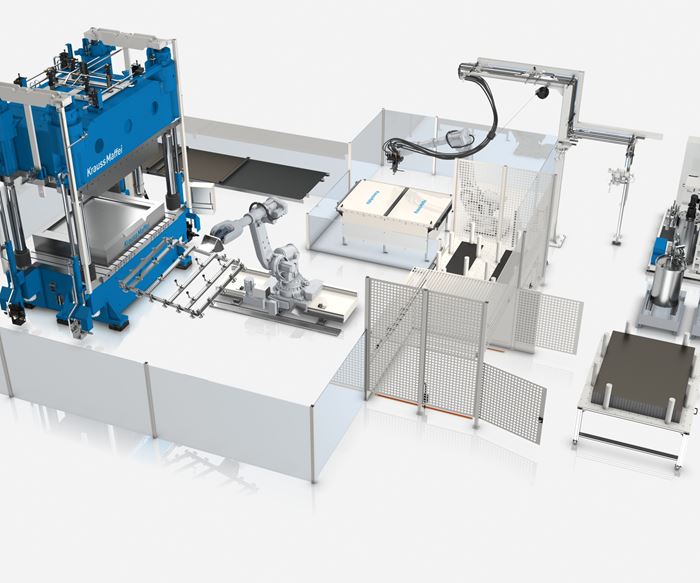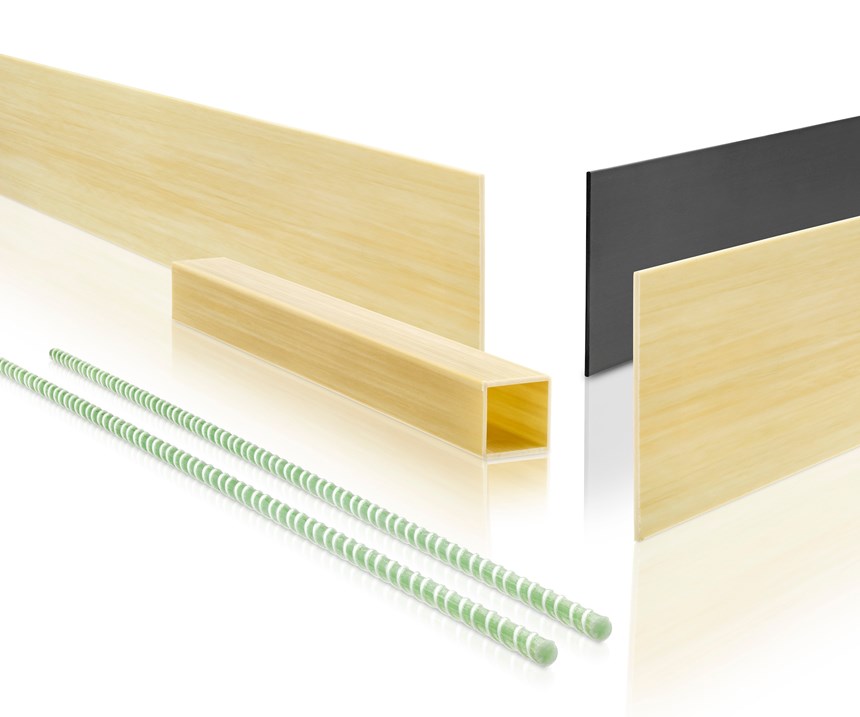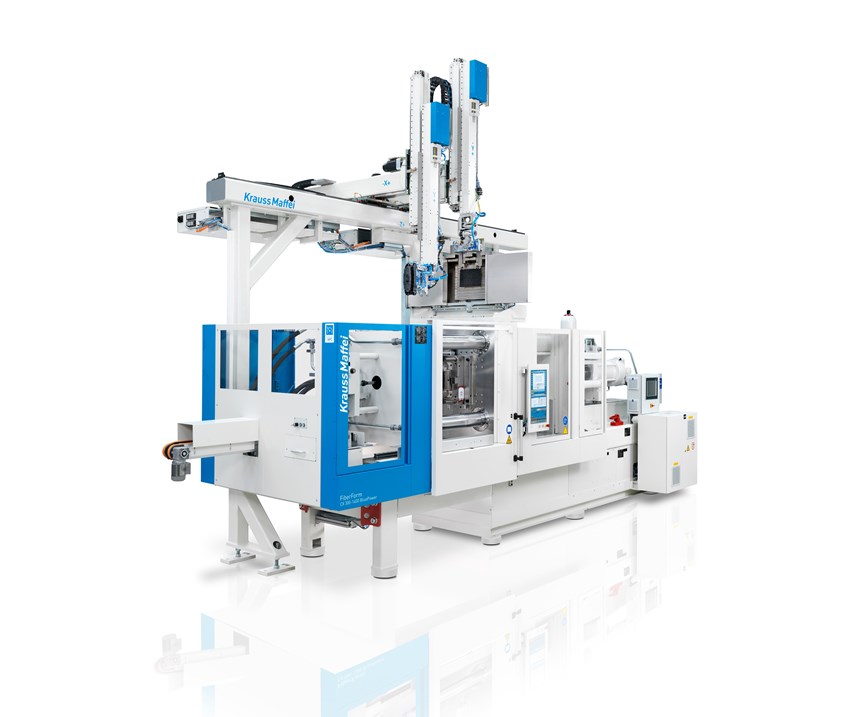JEC World 2018 preview: KraussMaffei
KraussMaffei (Hall 6, F61) is featuring several composites manufacturing technologies, covering wet molding, pultrusion, long fiber injection and overmolding.
KraussMaffei (Hall 6, F61) is featuring several composites manufacturing technologies, covering wet molding, pultrusion, long fiber injection and overmolding. The wet molding process, during which low mold cavity pressures are used during fiber wetting, says KraussMaffei, obviates the need for preforming and allows for the easy use of recycled materials. Another highlight is KraussMaffei’s iPul pultrusion system presentation. This is the first complete system for continuous pultrusion and has production speeds that reportedly are more than twice as fast as conventional tub processes. Applications include window profiles, rebar for concrete, or wind blade manufacturing. KraussMaffei recently expanded its Lightweight Construction TechCenter in Munich, Germany, by installing a second iPul system for manufacturing pultruded rebars for concrete elements.
Krauss Maffei also is featuring LFI (long fiber injection), which can be used to manufacture large components with excellent surfaces for trucks and agricultural machinery. LFI permits the use of fiber volumes of up to 50%, with low viscosity that allows for the manufacture of large, complex, thin-walled parts. KraussMaffei is presenting a side cover for a customers' commercial vehicles.
New from KraussMaffei is a nozzle-changing component for the SCS mixing head. Flat-fan and air-assisted circular jet nozzles that are required for spraying various sections of the component can be installed on a single mixing head. In the structural component spraying (SCS) process, layers made up of fiber mats and honeycomb cores are sprayed with unreinforced PU, inserted into a mold and compression molded. SCS permits outer layers with low thickness, so that the manufactured components are particularly lightweight. Flat-fan nozzles and air-assisted circular jet nozzles are available for the spraying process. Flat-fan nozzles produce a fan-like flat jet and are suited for large- format coating of the polyurethane mixture on relatively level, large-sized components. The air-assisted circular jet nozzles produce a finer spray and have a lower output capacity than the flat-fan nozzles. They are used primarily for component areas with challenging geometry.
KraussMaffei is also featuring FiberForm, which features the thermoforming and over-molding of organic sheets, platen-shaped semifinished products with continuous fibers made of glass, carbon fiber or aramid fiber that, for example, are embedded into a thermoplastic matrix made out of polyamide (PA) or polypropylene (PP). In this process, these semifinished products are initially heated and reshaped in the injection mold and then back-injected with a fiber-reinforced polymer. The fully automated process enables short cycle times of less than 60 seconds and, therefore, production processes that are ready for large series. The entire production process, including infrared heating technology control for the composite sheet has been integrated in the MC6 machine control system.
Related Content
-
PEEK vs. PEKK vs. PAEK and continuous compression molding
Suppliers of thermoplastics and carbon fiber chime in regarding PEEK vs. PEKK, and now PAEK, as well as in-situ consolidation — the supply chain for thermoplastic tape composites continues to evolve.
-
Jeep all-composite roof receivers achieve steel performance at low mass
Ultrashort carbon fiber/PPA replaces steel on rooftop brackets to hold Jeep soft tops, hardtops.
-
Plant tour: Joby Aviation, Marina, Calif., U.S.
As the advanced air mobility market begins to take shape, market leader Joby Aviation works to industrialize composites manufacturing for its first-generation, composites-intensive, all-electric air taxi.
















